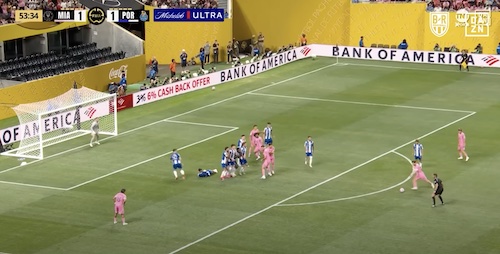2006 World Cup StadiumsLearn more: 2006 World Cup Stadiums – Germany60 years after the end of WWII, Germany is being invaded yet again. This time, however, it’s under decidedly friendlier circumstances as the globe’s biggest soccer nuts assemble for the 2006 FIFA World Cup. Organizers have announced that approximately 2.6 million World Cup tickets are being sold, meaning that there’s plenty of room for you and your fellow hooligans. So dust off your Togo jersey and grab your face paint as we break down the top 10 World Cup stadiums in Germany. Number 10 FIFA World Cup Stadium, Frankfurt What not to miss: Roll out the fish and chips as England takes on Paraguay on June 10, 2006. Brits around the world will be paying special attention to Wayne Rooney, the 20-year-old sensation who starred at the UEFA European Soccer Championship in Portugal. Number 9 FIFA World Cup Stadium, Dortmund The stadium’s most distinctive feature, however, are its eight 203-foot-high yellow support pylons, rising majestically above the skyline. What not to miss: History does an about face as Poland invades Germany for a match against the Fatherland on June 14, 2006. According to keeper Jerzy Dudek, "We want to make new history." Given the reams of Polish jokes in existence, it’s easy to understand why. Number 8 FIFA World Cup Stadium, Hanover What not to miss: Mexico will try to regain its past glory against Angola on June 16, 2006. El Tricolor has played well in recent years, cracking FIFA’s top five standings in 2005. Number 7 Zentralstadion, Leipzig Unlike its predecessor — which had a capacity of 100,000 — the new arena is decidedly more intimate with a seating capacity of only 45,000. Nonetheless, for what it lacks in size, it more than makes up for in improved sightlines and better amenities, like covered seats, outstanding acoustics and a modern roof with integrated floodlighting. What not to miss: The Netherlands will show off their blonde ambition as they take on Serbia and Montenegro on June 11, 2006. Keep a close eye on the Netherlands’ Mark van Bommel. The star midfielder is rounding into shape after a recent ankle injury. Number 6 Fritz-Walter-Stadion, Kaiserslautern In order to prepare for this year’s World Cup, Fritz-Walter underwent 48.3 million euros’ worth of renovations, including extensions to the west and south stands, reconstruction of the north stand, and the addition of a media and VIP tower. Otherwise, it’s been business as usual for this legendary soccer-only site. What not to miss: Old and new worlds clash on June 17, 2006, as Italy — the perennial powerhouse — takes on America. After reaching the quarter finals in 2002, the U.S. team will be eager to prove it belongs on the international scene. Number 5 FIFA World Cup Stadium, Cologne What not to miss: Get ready for a major grudge match as Sweden takes on England on June 20, 2006. David Beckham will be gunning for Mighty Britannia to get its first World Cup since 1966. Number 4 FIFA World Cup Stadium, Hamburg The new stadium has received a maximum five stars from UEFA (Union of European Football Associations) thanks to a 97-million euro investment that included remodeling the function rooms and VIP and media areas, as well as covering the spectator areas. What not to miss: Get ready as Argentina collides with Côte d’Ivoire on June 10, 2006. The two-time world champs are considered favorites at this year’s World Cup, despite a less than stellar showing in 2002. Number 3 FIFA World Cup Stadium, Munich And just when you think they’ve thought of it all, if you’re in need of parking there’s plenty of that too, thanks to 10,000 underground spots. Perhaps the only thing more impressive than the stadium itself is the support it has received since day one. In October 2002, Munich attracted the highest-ever turnout in a Bavarian referendum, as 65.8% of voters were in favor of building the stadium. What not to miss: All eyes will be on Munich on June 9, 2006, when the city hosts Germany and Costa Rica in the World Cup’s opening match. Look for Germany and its young squad to rise and fall with the success of their team captain, Michael Ballack. Number 2 Olympiastadion, Berlin Don’t look too hard for signs of aging, however, as the 74,000-seat stadium recently underwent a 242-million Euro facelift, which provided for both VIP and sky boxes, as well as business seats and new underground parking and training facilities. What not to miss: Be on hand June 13, 2006, as Brazil takes on Croatia. The five-time World Cup champs promise to be as dominant as ever after recently embarrassing Chile by five goals in a tournament qualifier. Number 1 FIFA World Cup Stadium, Gelsenkirchen That praise is due in part to the arena’s removable playing surface, giant video cube and retractable roof. As impressive as the 48,426 seater may be, the financing is even more mind-blowing. Believe it or not, the 191-million euro stadium was built entirely with private funds. What not to miss: Get ready for a red, white and blue love-fest as the U.S. squares off against the Czech Republic on June 12, 2006. Are you ready for some football? From June 9, 2006, until July 9, 2006, the world will be drawn to Germany as 32 of the planet’s best soccer teams compete for the prestigious Jules Rimet Cup. Over a billion fans will watch the action on TV and an additional 2.6 million will be there in person. So the question remains: Where will you be when the final goal is scored? Submitted by: AskMen.com – 2006 World Cup Stadiums in Germany |
Your Soccer Resource Center














